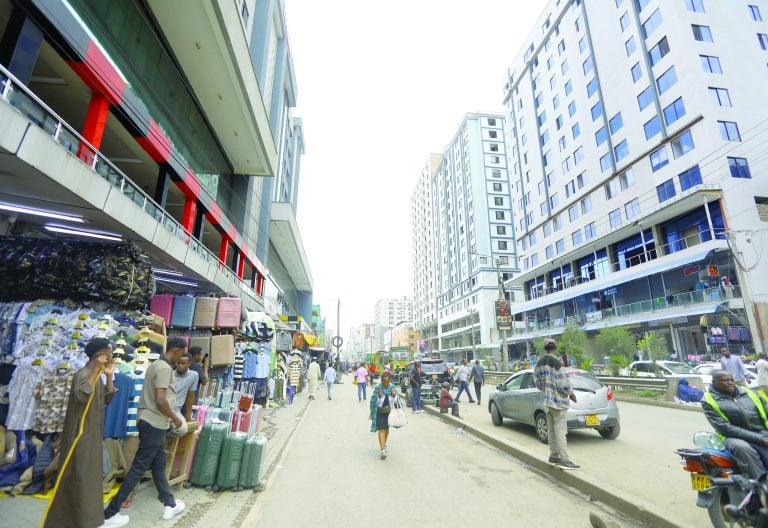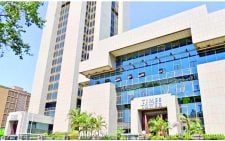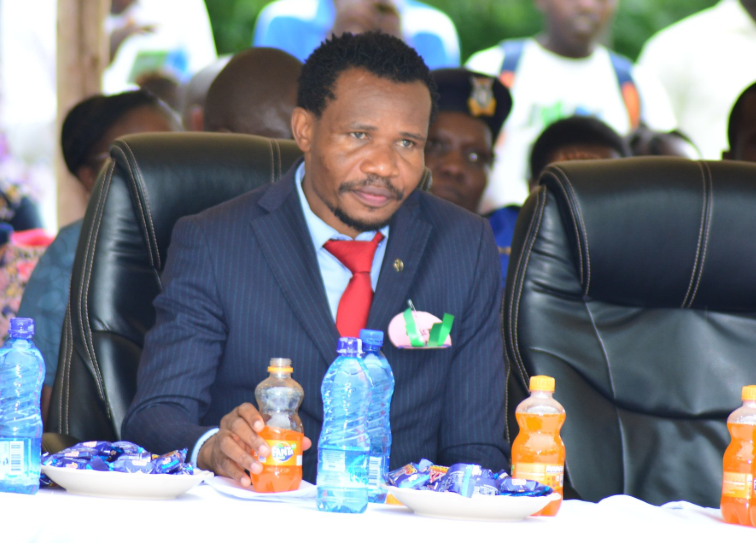The reinvention and rise of Nairobi’s ‘Little Mogadishu’

The heart of Eastleigh throbs with a relentless energy. The narrow streets, each covered with high-rise buildings and mega malls, bustle with life 24/7. People overflow, shoppers flock in, hawkers yell, trucks rumble and matatus honk. Boda bodas are all over, darting, trying to find a way through traffic jam, dodging pedestrians, and vendors whose goods are placed on walkways, lining entrances of buildings.
It’s busy, it’s chaotic, but alive and electric.
Once a low-lying residential area with a small population, Eastleigh has seen immense transformation through the decades and morphed into a high-volume business district.
Popularly known as the ‘Little Mogadishu’ owing to its high population of residents of Somali extraction, including refugees who fled Somalia in the 1990s, this commercial hub attracts approximately 200,000 people daily, moving in and out of the estate daily, primarily for business purposes.
Sudden sprout
In this self-styled ‘city within a city’ where people never sleep, there are more than 130,000 residents from all walks of life. Those who’ve seen it grow, attest to a transformation that happened rapidly, and right before their eyes.
Mzee Issak Harro Godana, one of the Nyumba Kumi elders in Eastleigh North, has lived in Eastleigh from 1973 and has witnessed its transformation throughout the years. He says the transformation began sometime after the collapse of the Somali government and gained momentum over the last 15 to 20 years.
“All these tall buildings were built recently after the Somali government collapsed in the 1990s, leading to their influx into the then primarily Asian suburb. During the coalition government of Kibaki and Raila, no building went past four or five floors, but in the last 15 to 20 years, people have built taller buildings of up to 20 floors,” says Mzee Godana.
Now, even in areas near Moi Airbase, where tall buildings are generally forbidden for security reasons, we have buildings with up to 15 floors.
Rapid infrastructure growth is driven by the need for modern buildings that cater to their occupants’ basic needs. Therefore, these colossal structures have malls and mosques on the ground floor and restaurants on the middle floor for convenience.
However, this growth has occasioned inconveniences, especially for the general population, who may not necessarily be there for business. Due to human congestion and narrow streets, they simply cannot take leisurely walks around their neighbourhood past 4pm.
“There are no service lanes from Bangkok to 9th Avenue. We have buildings on both sides of the road, complete with complexes, preventing the construction of service lanes. While this is good for business, it means there is little parking for vehicles and free movement of people,” Mzee Issak adds.
When it comes to business, Rosemary Nawiri, 50, a Nairobi resident who grew up in Eastleigh recalls hawkers tucked in the busy streets of Garissa Lodge, which used to be the main trading centre for nearly everything.
“Garissa Lodge used to be the nucleus of everything. If you wanted to buy anything or make a deal, this was where everything used to happen. You had to go to ‘Garissa’. But now every corner is a business hub and in almost every street there several commercial buildings, some residential apartments even have businesses mostly on the ground floors,” says Nawiri.
She attributes these changes to the rising population, which has led to an increase in the demand for goods and services, ultimately increasing the number of entrepreneurs.
Diverse businesses
“Given the high population and thousands of entrepreneurs, Garissa Lodge could no longer play host to all of them. Businesses had to spill to other areas and now it’s like the whole of Eastleigh is no longer only a residential area but also a commercial hub,” she says.
Where once were plain fields and low-rise buildings, now lies major malls like the Business Bay Square (BBS) mall, one of the largest malls in East Africa boasting 130,000 square metres. Not to mention hundreds of high-rise retail complexes housing diverse businesses ranging from the hospitality, banking and finance, household goods, beauty and cosmetics, clothing, and imports and wholesale distribution among others.
New entrants like the BBS mall have revolutionised commercial activity in the area, becoming a focal point for new businesses in the various sectors
Informal traders too are have reaped massively from this transformation, making big profits especially from ‘foreign money’ as they popularly call it.
James Ouma, an informal trader vending men’s belts, says compared to three years ago when he started his venture, today, business is booming and on a good day, he tucks in a decent return.
“Unlike when I started out, there are a lot of customers now. The increased diversity in population especially foreigners including Sudanese, Nigerians, Ethiopians, Congolese, and Somalis has increased customers. They have money and they usually are willing to pay more than our Kenyan brothers,” reveals the micro -entrepreneur.
Ouma emphasises that the influx of foreigners has since obliged him to strategise, making them his main target market.
“The foreigners are always willing to buy without bargaining even if the price is high. As long as they like your merchandise, they are always willing to pay. But when I’m selling to our country men, I have to lower the price and that’s not good for business. So, I mainly target the foreigners,” he adds, further pointing out that he prefers doing business in Eastleigh because it’s more attractive to customers.
Increase in buildings
“Due to the high population in Eastleigh, and more so the diversity, customers are always in plenty,” he adds.
The rise in both modern commercial and residential buildings has had a great impact on the area’s security, significantly reducing crimes that were initially a menace in Eastleigh.
Ouma further points out that the increase in buildings, each having a security personnel, has boosted Eastleigh’s security.
“Most of the buildings have security personnel stationed at each entrance and they conduct thorough check-ups, whether on shoppers or residents. There are also CCTVs mounted on these buildings, which monitor the area and the local police also conduct regular patrols. It’s much safer now compared to a few years back,” he says.
Amid the congestion and hustle and bustle, Eastleigh continues to reinvent itself and its growth seems to just have started. High-rise buildings still continue to crop up, an indication that more is yet to come. And did you know, Eastleigh is one of the significant contributors to Nairobi’s economy? It’s resilience, a testament to the power of local entrepreneurship, resilience, and adaptive growth.















